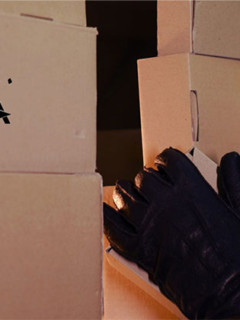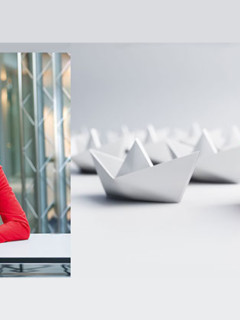According to the Federal Ministry for the Environment, Nature Conservation and Nuclear Safety, every German buys an average of 18 kilograms of clothing per year, which corresponds to 50 to 70 items of clothing. This puts us in the lead in a global comparison, together with the USA and Switzerland.
However, according to the study, Germans actually wear only 36 per cent of the clothes in their wardrobe – probably much less than anyone would think. A good reason to “clear out” and turn unworn clothes into money in second-hand online shops.
The approach to this project (for example the Capsule Wardrobe Experiment) can be quite different, but most approaches agree on one point: a number of 20 to 36 items of clothing belong in a wardrobe, the rest is unnecessary ballast.
Tidying up as a science
You’ve probably heard the name Marie Kondo before. The Japanese woman enjoys extreme popularity as a tidying expert. Marie Kondo landed a bestseller in several countries with the book “Magic Cleaning: How Proper Tidying Up Changes Your Life” and triggered a real movement. TIME Magazine named her one of the 100 most influential people in the world back in 2015, and earlier this year she launched her own reality series on Netflix, “Tidying Up with Marie Kondo”.
So far, no one has managed to trigger the same effect with the idea of minimalism as the well-known tidying consultant. Although her book on the subject of Magic Cleaning was published in 2011, her real breakthrough only came with its broadcast on Netflix. Because following the Netflix series, the industry was able to observe a clear Trend upwards observe.
Online clothing market: trade in “old” is booming
A representative of the American company Poshmark, a marketplace for the resale of clothing, shoes and accessories, noted a 64 percent increase in listings compared to 2018. The competitor thredUP works in a similar way: users can send in everything in so-called “purge bags”. The company then advertises and sells the fashion items on behalf of the customer. There was an 80 percent increase in orders for the purge bags after the launch of the reality series on Netflix. In a customer survey, even more than 60 percent said that Marie Kondo’s Netflix show was the incentive for decluttering.
Recommerce works for us too
But not only in the American market, but also in the German online second-hand business, start-ups like Rebell, Kleiderkreisel and Mädchenflohmarkt have successfully implemented Kondo’s business model with the recommerce of fashion. Rebell focuses on designer fashion and growth. Kleiderkreisel networks 5.8 million wardrobes in Germany and is the German market leader among second-hand shops. 63 percent German market leader among second-hand platforms. The Stuttgart-based company Mädchenflohmarkt sells 25,000 items of clothing a month and has an annual turnover in the double-digit millions. Some customers are said to have already earned around 30,000 euros with popular brands like “Zara” on the Kleiderkreisel platform.
Clean out properly – this is how it’s done!
Marie Kondo’s concept has already influenced millions of people. But how does Magic Cleaning differ from other tidying models? The Japanese woman actually recommends starting with the wardrobe first. She doesn’t see it as a lengthy process, but rather as a special event. Decisions should be made quickly and according to feeling:
Set deadlines
According to this concept, planning is indeed everything. A category is planned bit by bit with deadlines: 30 minutes for the socks, 40 minutes for the T-shirts and so on. The planning of stages shows quick goals and quick feelings of success. After just a few weeks, an “aha” experience occurs.
Listen to your gut feeling
Step by step, each item of clothing is taken in hand, touched and looked at. The feeling in the body is more important than the thoughts associated with it. The question “How does the item make me feel?” is the main focus. Thoughts like: “But those trousers were incredibly expensive!”, should be faded out. The items of clothing that give a positive feeling, that even give pleasure, are kept. Items of clothing that are never worn, that give rise to negative thoughts, are sorted out.
In short: Everything that shows how you would like to be, what makes you tick, what makes you feel good, should remain in your wardrobe.
Appreciation for the belongings
Marie Kondo believes it is important to say goodbye to discarded clothes, even to feel gratitude. For example, a drawer can be set up for this purpose. If one has outgrown one’s favourite shirt or it is washed out, a drawer can be set up with the favourite pieces from the old days. This probably makes it easier to let go and makes room for something new. Nevertheless, one should make sure that the drawer is not overflowing with memorabilia, but contains a consistent amount of clothing.
FAQ for the trade in second-hand fashion
The wardrobe has been tidied up, the decision has been made which worn or new items of clothing will be given away or sold on a second-hand fashion portal, the items are online and the first interested parties are contacting you. For private individuals, however, shipping fashion is not a daily routine and many questions arise: How should the garments be sent? Which packaging is suitable for what?
We have taken a look around and looked at the most frequently asked questions, FAQs (in German: die häufigsten Fragen) of private second-hand sellers.
How to ship clothes well and cheaply?
If you look around, there are many experiences with padded envelopes, which are nevertheless sent as a parcel because of the dimensions. The solution: shrink-wrapping the goods. Professional online shops use a Bonnet shrink machine. For private sales, of course, the purchase is not worthwhile. But with bags in different sizes, you can send sturdy textiles inexpensively. It is important to make sure that the material is thick enough to avoid damage. For example, three shirts could be shrink-wrapped in a bag with an iron and then labelled. Necessity is the mother of invention!
How are fine garments sent?
Evening wear, cocktail dresses, shirts, blouses, shoes or handbags are more vulnerable than jeans and shirts, for example. Sensitive garments should therefore be stored and shipped safely. Clothes covers offer protection against dust and dirt. To ensure that your goods reach the recipient undamaged and without wrinkles, they should be shipped with twin-wall cartons shipping. When selling high-quality fashion, the shipping costs can therefore be set higher on the selected platform. Also the so-called Clothes boxas known from removals, for example, can also be used for shipping.
Purchase portals for clothing
You will have the least work if you leave the selling of individual items of clothing to others. So-called buying portals (for example momox) buy your clothes in a package – at a previously fixed price. Postage once, shipping once – the resale is then handled piece by piece via the portal. In this way, you may earn less than if you were able to control and organise the sale yourself, but in just one step you have an empty wardrobe and in return your money: without having to photograph, sell and pack yourself.
Second Hand Fashion Mail Order
Cash is in almost every wardrobe. If you can get your act together, set clear goals and use second-hand trading online, you can not only make room for new fashion, but also earn money for new fashion items. One cornerstone here is to keep packaging and shipping costs as low as possible.
Second Hand, Second Live
In times of overconsumption, the focus should be even more on sustainability. The textile industry not only has a recycling problem, but also pollutes the environment. In the period from 2000 to 2014, clothing production doubled. And not because there is a need, but because consumers want more choice. Comparatively, the wearing times of clothes have shortened enormously. But when unworn and used clothing is added to the cycle again, several people benefit at once:
- People selling the clothes in terms of monetary value
- People who buy the clothes cheaper than in the regular shop
- Environment, because the product life cycle is extended
















